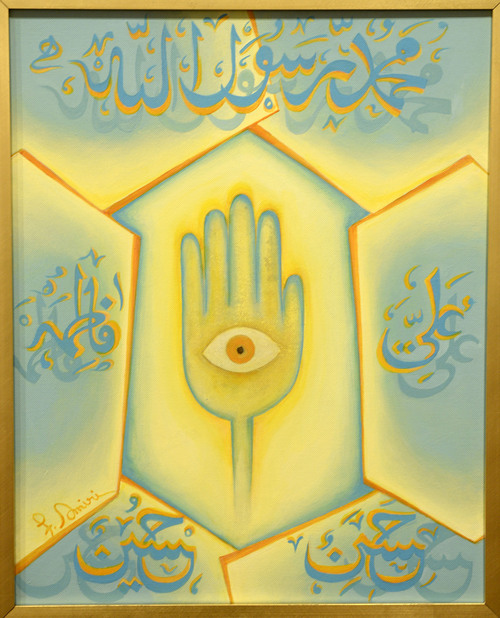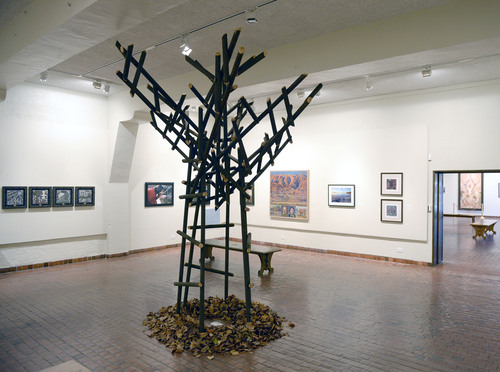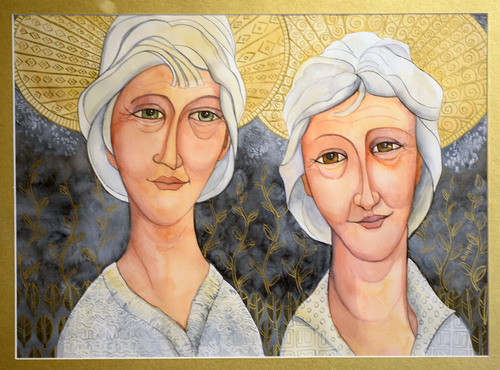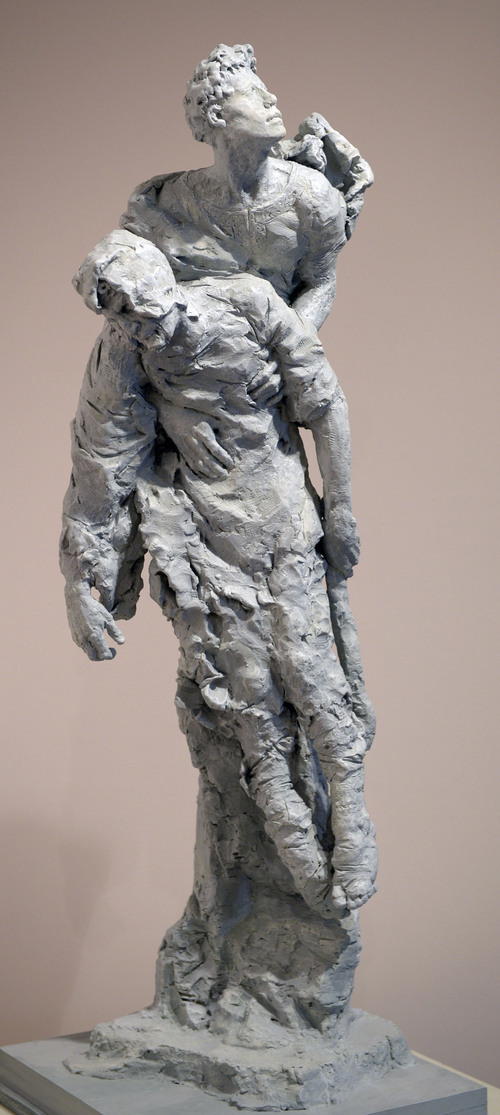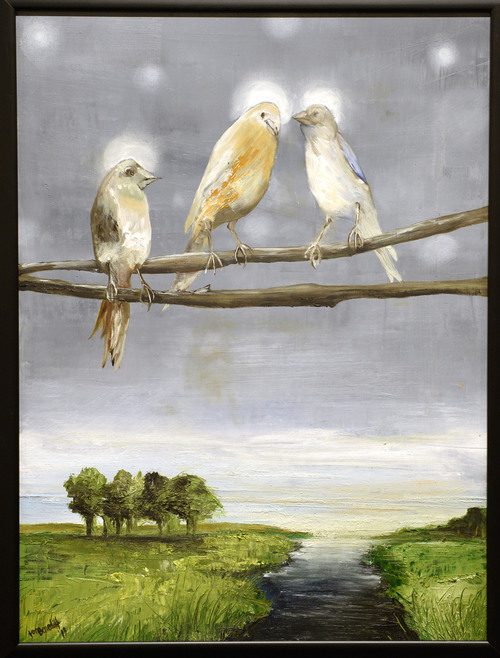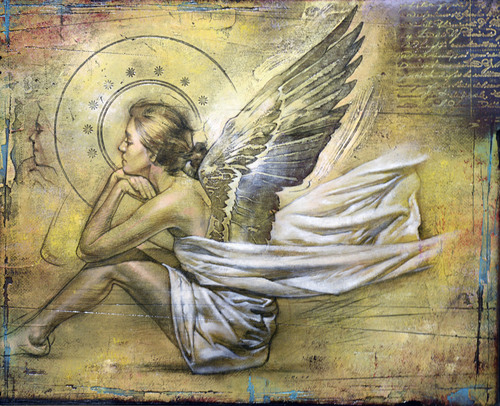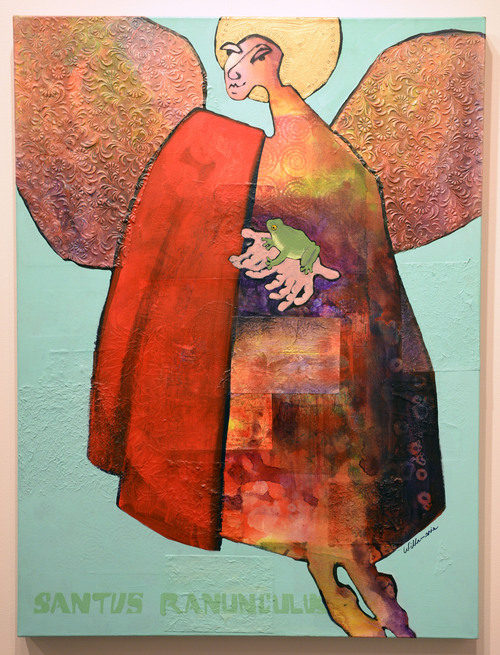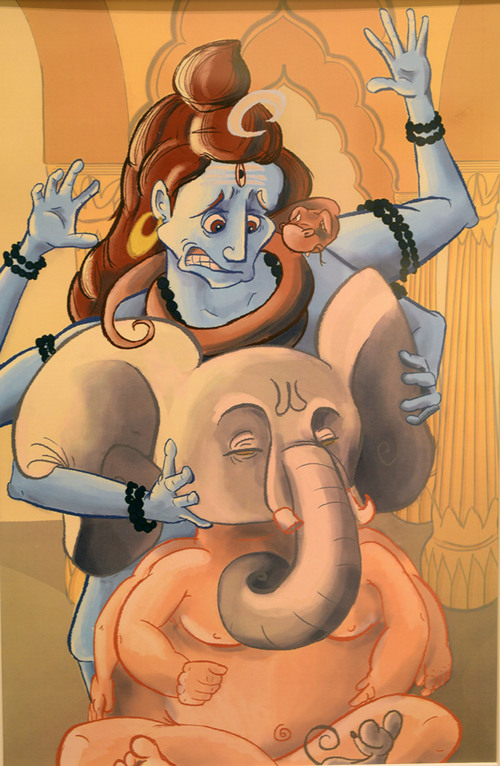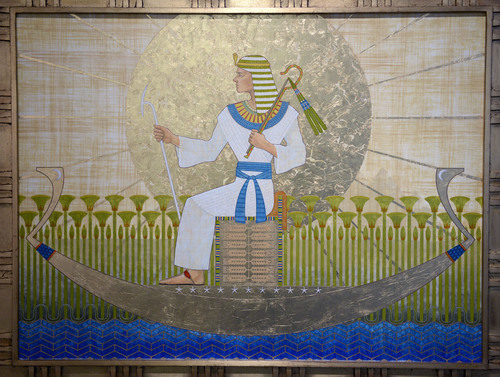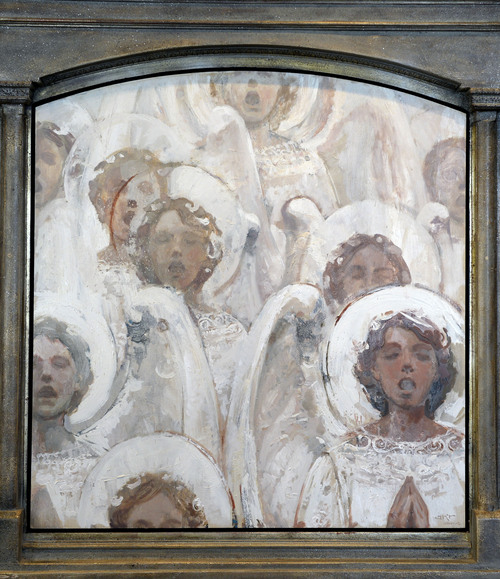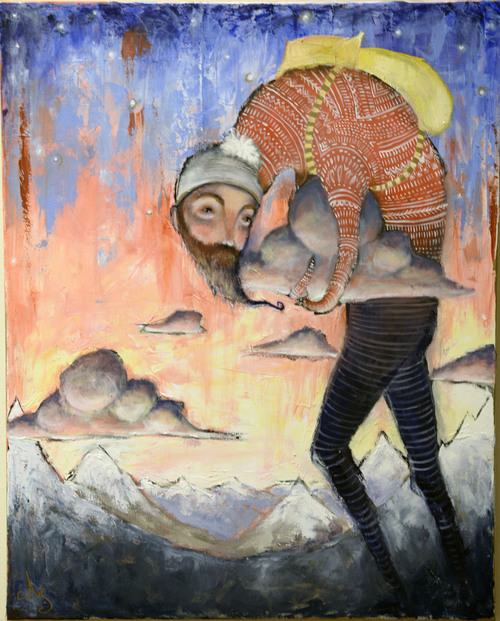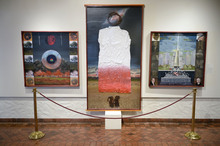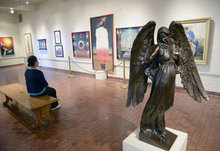This is an archived article that was published on sltrib.com in 2013, and information in the article may be outdated. It is provided only for personal research purposes and may not be reprinted.
Springville • You would, of course, expect to see lots of angels at a spiritual art exhibit — as well as Jesus, Madonnas, biblical figures, crosses, steeples, Hindu gods and Islamic prayer rugs.
But birds, beggars, books, flying maps and beams of light?
"You can find the sacred in nature and ordinary objects," says Rita Wright, curator at Springville Museum of Art's annual "Spiritual & Religious Art of Utah Exhibition," where these works are on display. "We stretch the definition of 'spiritual' to include many images that are not conventional iconography."
The show celebrates the experimental nature of younger artists, she says, who are trying to express their intuitive spirituality.
Birds, for example, often have been depicted with halos as being God's creatures and part of the cosmos, Wright explains. A beam of light could be coming from a tractor headlight or a light saber — whatever the source, it gives the artist a chance to express a sense of holiness.
Artist Pilar Pobil, who was reared Catholic but is not religious today, appreciates the show's expansive definition of faith.
"What I like about this show is the fact that you don't have to paint a religious theme," says the 87-year-old Salt Lake City artist. "You can express what you feel spiritually."
In Pobil's case, that is concern for Mother Earth.
Her piece, "El Crepusculo de la Madre Tierra" (The Twilight of Mother Earth), shows a dejected Greek goddess as the central figure. Beneath her is a human family — husband, wife, child. The man and child are sleeping, while the women has her eyes open, like she is waiting. (Pobil also painted into the scene her beloved dog, who died two years ago.)
"I put all of them in the middle of twilight, with stars shining in the firmament, and branches of bare trees," Pobil says. "It is what I feel about the Earth. We should take care of it before it's too late."
The piece, she says, "is sort of a protest."
Then there's "Tantamount," by artist Natalie Kaye Soper, a 20-year-old Brigham Young University illustration student, which depicts a hunched figure, with a yellow backpack, surrounded by mountains and lakes.
The word "tantamount means 'virtually the same as,' " she says. "I was trying to get across in the painting that I believe the beauty of the world is the same thing as God's love."
Her figure, Soper says, is a "wanderer."
"Men who wander appear repeatedly throughout Christian scripture," she says. "Their priority is not the things of this world; they know where their real home is."
And the hunchback image?
"I wanted to get across the emotion and feeling of different burdens," Soper says. "They can be positive or negative. The burden of feeling blessed with the beauty of the world is a lot to handle. There are also the burdens of mortality, which we all struggle with. "
In the end, she says, "Tantamount" is about the quest for faith and truth.
Wright sees in Soper's work an allusion to all those who feel like "strangers in a strange land or who wander in the wilderness," all themes in various scriptures.
Cynthia Lewis Clark, a Mormon artist and grandmother in Orem who taught in the Alpine School District for 30 years, has reimagined the traditional three kings of the Christmas narrative who brought gifts to the child Jesus. Her piece, called "Magi or Matriarch," used simple geometric shapes made of beeswax and rosin to create figures that are indistinguishable by gender.
"Three Magi came to view the Christ child. Their knowledge was precise and accurate. They stood as witnesses that the King Emmanuel was born in the flesh," Clark writes in the piece's description. "In this painting, three figures firmly stand, whether Magi or Matriarch, with open minds and strong voices testifying that through the blood of Christ, all mankind may be saved."
In Clark's case, she says, the wise people were three women: her mom and two grandmothers.
The Springville show still showcases many traditional religious themes that reach down to the artists' souls and touch their deepest beliefs.
All in all, Wright says, these artists celebrate the divine — in all its incarnations.
Twitter: @religiongal —
Award winners
First place • J. Kirk Richard, "Angels Singing in White"
Second place • Michael Aaron Hall, "Of Heaven and Earth"
Third place • Justin Burton Kunz, "On Earth as It Is in Heaven"
Honorable mentions
Cynthia Lewis Clark, "Magi or Matriarch"
Bryon K. Draper, "Heavy Offering"
Sandra Engle Dunbar, "Jacob and Joseph (coat of many troubles)"
Gretchen Faulk, "Bismillah"
Glenda Gleave, "Blessed Among Women"
Anne Gregerson, "Handmaiden"
Dennis Smith, "About My Father's Business"
Nick W. Stephens, "Joseph in Egypt"
Elspeth C. Young, "And He Shall Direct Thy Paths (Lois)"
To view more photos and a video, go to http://www.sltrib.com. —
See the exhibit
The "Spiritual & Religious Art of Utah Exhibition" runs through Jan. 15 at the Springville Museum of Art, 126 E. 400 South, Springville. It is open Tuesday, Thursday, Friday and Saturday from 10 a.m. to 5 p.m., Wednesday from 10 a.m. to 9 p.m. and Sunday from 3 to 6 p.m.


